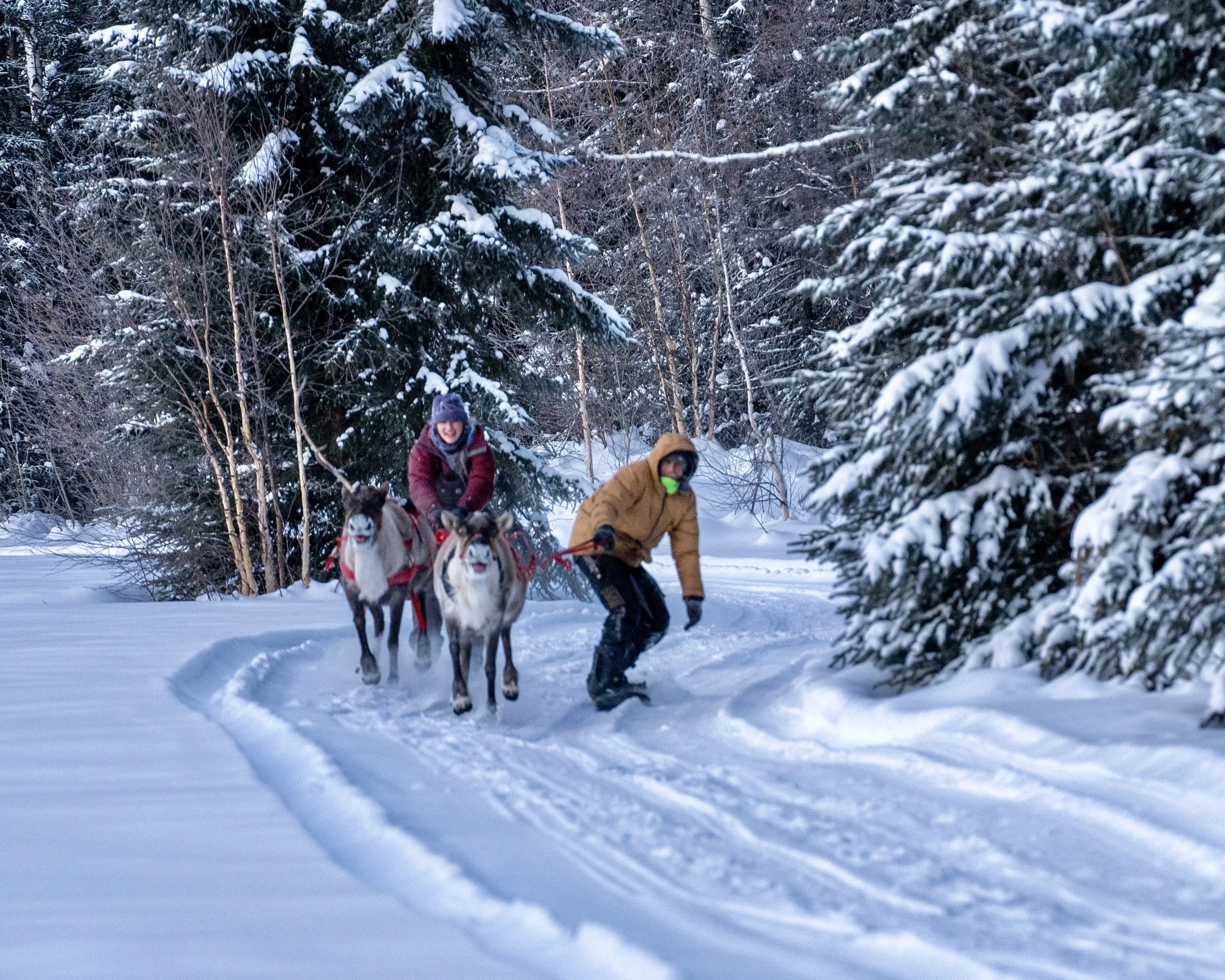The Herd
Why Reindeer?
Reindeer are an ultimate arctic animal. They thrive in the cold. Their thick, hollow fur allow them to be comfortable lounging at -50F. We are training our herd to pack and pull sleighs.
Click on each reindeer’s photo to learn more about each deer!
Reindeer Fun Facts- Caribou vs. Reindeer
While they might resemble their cousins the caribou, reindeer and caribou are different subspecies. There are approximately 55 different species and subspecies of reindeer and caribou across the world with four subspecies of caribou in North America.
Caribou Rangifer tarandus granti
Caribou play an important role in Alaska both culturally and environmentally. There are approximately 750,000 wild caribou in Alaska separated into 31 different herds. The Porcupine Caribou Herd boasts one of the longest documented land migrations of any terrestrial mammal, sometimes exceeding 3000 miles! Due to the remoteness of Alaska and northern Canada, North America is one of the few areas where large migrations still occur unobstructed by humans (although this is rapidly changing). Caribou are browsers, eating mostly willows, flowering tundra plants, sedges, and mushrooms in the summer and lichens (reindeer moss), dried sedges, and small shrubs in the fall and winter.
Reindeer Rangifer tarandus tarandus
Reindeer domestication began almost 3,000 years ago in Russia. Most of the reindeer in North America are descendants of herds from Siberia brought to Alaska in the late 1800s. Reindeer are typically stockier and smaller than their caribou cousins and have less of an urge to migrate. They enjoy similar foods to caribou and are also fed specialized pellets comprised of barley, oats, alfalfa, soybean, vitamins and minerals.
Similarities
Both male and female caribou and reindeer grow antlers. The males grow large, thick antlers, whereas females grow small, thin antlers. Males typically shed their antlers shortly after the fall breeding season while females shed theirs after giving birth in the spring; however, it is not uncommon for there to be variations. Caribou and reindeer have hooves that act like snow shovels, allowing them to dig through the snow. Their coats are comprised of fur with a hollow core, enhancing insulation and making them good swimmers. Their nasal cavity is filled with cartilaginous structures so that cold inhaled air passes over the warm mucosal membrane and is heated to body temperature before reaching the lungs. They can eat snow for hydration in the winter, so a water source isn’t necessary.





















